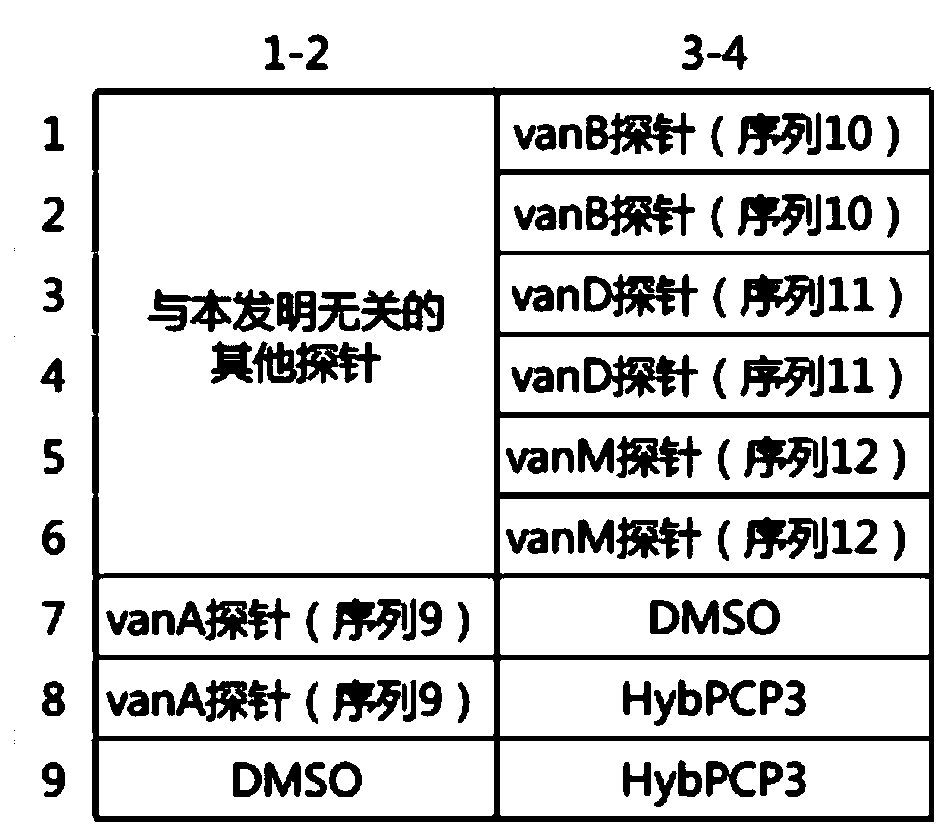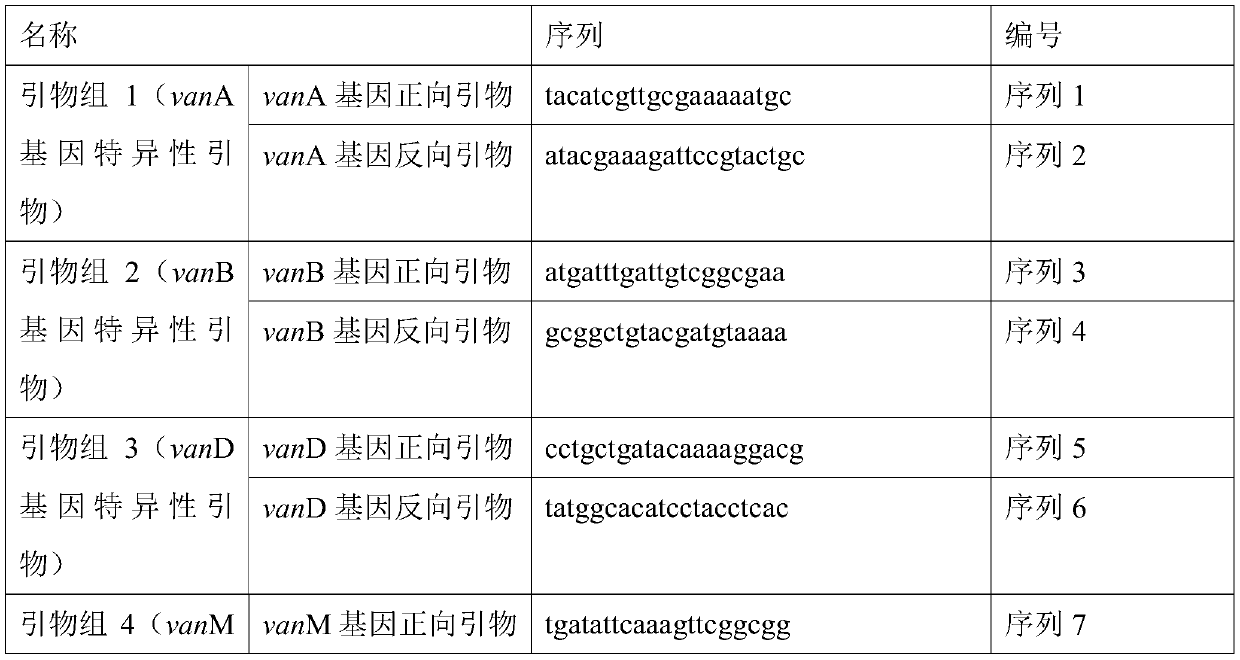Specific primer combination and probe combination for detecting four glycopeptide drug resistance genes in enterococcus bacteria and application thereof
A drug-resistant gene, Enterococcus technology, applied in biochemical equipment and methods, recombinant DNA technology, microbial assay/inspection, etc. Achieving significant promotion value and high specificity
- Summary
- Abstract
- Description
- Claims
- Application Information
AI Technical Summary
Problems solved by technology
Method used
Image
Examples
Embodiment 1
[0044] Example 1. Coverage and specificity of primer combinations and probe combinations for four glycopeptide drug resistance genes
[0045] This example illustrates the coverage and specificity of the primer combination and probe combination for detecting four glycopeptide drug resistance genes described in the present invention through the following steps.
[0046] Step 1: Download the reference sequences of the four glycopeptide drug resistance genes vanA, vanB, vanD and vanM involved in the present invention from the authoritative database of antibiotic resistance—The Comprehensive Antibiotic Resistance Database (CARD): M97297( vanA), KF823969(vanB), AY082011(vanD) and FJ349556(vanM).
[0047] Step 2: Submit the reference sequences of the above four drug-resistant genes to NCBI for online Blast comparison, and the comparison database is a non-redundant nucleic acid database (version 20190315). Among them, the vanA gene reference sequence M97297 obtained a total of 253 al...
Embodiment 2
[0060] Embodiment 2, the detection specificity of the specific primer probe combination of the present invention
[0061] The primers and probes used in this example were synthesized by Shanghai Yingjun Biotechnology Co., Ltd.
[0062] 1. Preparation of samples to be tested
[0063] In this example, plasmid DNAs containing four glycopeptide drug resistance genes vanA, vanB, vanD and vanM were used as test samples to test the detection specificity of the primer-probe combination described in the present invention.
[0064] The preparation method of each of the above-mentioned plasmids is as follows:
[0065]Sample 1 to be tested is a plasmid containing the drug-resistant gene vanA: replace the sequence between the HindIII and EcoRI sites of the pUC18 plasmid with the sequence shown in the vanA gene reference sequence M97297 to obtain a recombinant plasmid that contains the drug-resistant gene vanA plasmid;
[0066] Sample 2 to be tested contains a plasmid containing the drug...
Embodiment 3
[0127] Embodiment 3, detect enterococcus bacterial strain with specific primer probe combination of the present invention
[0128] In this example, the collected glycopeptide drug-resistant strains, specifically vancomycin-resistant Enterococcus faecalis (Enterococcus faecalis), faecium (Enterococcus faecium), and glycopeptide drug-sensitive strains were tested for vanA, The detection of vanB, vanD and vanM drug resistance genes is to illustrate that the specific primer probe combination provided by the present invention can be used to detect the detection of the above four drug resistance genes in glycopeptide drug resistant strains.
[0129] details as follows:
[0130] 1. Samples to be tested
[0131] In this example, the specific primer-probe combination described in the present invention was used to detect vancomycin-resistant Enterococcus faecalis and Enterococcus faecium strains, and vancomycin-sensitive strains respectively.
[0132] It was confirmed by sequencing th...
PUM
 Login to View More
Login to View More Abstract
Description
Claims
Application Information
 Login to View More
Login to View More - R&D
- Intellectual Property
- Life Sciences
- Materials
- Tech Scout
- Unparalleled Data Quality
- Higher Quality Content
- 60% Fewer Hallucinations
Browse by: Latest US Patents, China's latest patents, Technical Efficacy Thesaurus, Application Domain, Technology Topic, Popular Technical Reports.
© 2025 PatSnap. All rights reserved.Legal|Privacy policy|Modern Slavery Act Transparency Statement|Sitemap|About US| Contact US: help@patsnap.com



